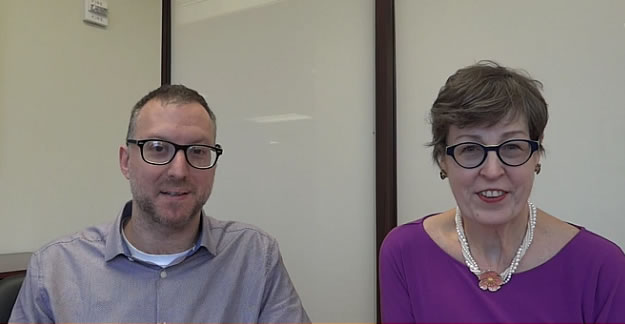This week, Su and Jonathan look back on the biggest stories of 2016, including the exposive growth of opioid addiciton and the pros and cons of the 21st Century Cures Act. And a little shout-out to our favorite health-related website (ahem).
Su Robotti: Hi, I’m Su Robotti, and I’m the Founder of MedShadow, and this is–
Jonathan Block: Jonathan Block, I’m the Content Manager for MedShadow.
SR: Today, we’re going to talk about what were the three big news stories of 2016. It’s hard to imagine we’re done with 2016 already, but, before we sweep it out the door, let’s reviews as we found the fascinating, appalling and interesting about the year. First up is opioid.
JB: Yes, opioids kind of dominated sadly the news throughout the year because as many of our viewers know, we’re in a massive opioid epidemic and trying to get some sort of policies in order to turn that around, and unfortunately, nothing seems to be changing even though there was some legislation that was passed earlier this year that will increase funding for opioid addiction and treatment. They still have a, they still have a long way to go before that epidemic is going to be appropriately tackled unfortunately.
SR: Too little is known about what the bases of addictions are, about how to help people get rid of their addictions. And we’re getting too many opioid drugs on the market too quickly—Fentanyl is the latest deadly opioid drug, and you know, I’ve been told that you cannot take Fentanyl with any regularity and survive.
JB: Well, the thing is, also, is that even now, a lot of these manufacturers are coming out with so called abused deterrent versions of it, there’s still ways that you can get around, still abusing it. The other thing is that these drugs are still heavily marketed by these companies through doctors. Even now the pharma companies know the inherent dangers of opioid and what can happen when you take them over the long term–
SR: Oh I got to say, I got to say–
JB: Go right ahead.
SR: Any doctor who is unaware of the addictive problems of opioid abusepla at this point, you just hand in medical licenses.
JB: Well, maybe they do understand but they’re getting kickbacks from the pharma companies.
SR: No, we need, we need everyone on the same team here.
JB: Oh I agree.
SR: The pharmaceutical companies need to match that, yes, but the doctors need to be able to say no, and the patients need to understand that sometimes life hurts–
JB: Exactly–
SR: And you can’t always take a pill, opioid doesn’t even work in many of the cases that they’re given to the people.
JB: Well that’s the thing that you just touch upon, and is that patient education is really what’s going to turn the tide with this epidemic.
SR: I don’t know what will, but hopefully–
JB: Well it can and cannot–
SR: Maybe 2017 will be able to figure out the opioid problem–
JB: Fingers cross–
SR: Yes. Next: 21st Century Cures. This is a classic example of “don’t believe headlines.” Don’t believe in name of acts. 21st Century does want to help cures, and they’re pretty a lot of money towards the Cancer Moonshot. But there are many, many aspects of the 21st century cures that could end up being 21st Century Hurts. One of the major problems I have with the 21st Century Cure is that it continues to rush the trials of drugs through the vetting process. It pushes the FDA to approve drugs faster than the FDA’s ever been comfortable with–
JB: And with less concrete data supporting it, that’s the crucial thing. You could do it faster, that’s one thing, but if you do it faster with less concrete evidence, that’s double whammy.
SR: Right. So, we would very much, we very much want more money for research, but we also want a thoughtful method approach, because drugs that are pushed on to the marketplace can have devastating consequences for those who take them. Which now leads us to a very, what I consider, a sad example of a drug called–
JB: Exondys 51, also known as Eteplirsen. This was a drug that was approved in the fourth quarter of 2016 for a condition known as Duchenne muscular dystrophy. Why is this, why are we discussing this? Because this was a drug that was approved with a trial of just 12 young boys, there was no placebo arm, because usually, not usually almost every other drugs that is approved, they have to have a placebo arm to make sure that there isn’t a placebo effect going on. This drug, Exondys 51, did not have a placebo. The other thing is that the actual efficacy of the drug was kind of, iffy at best.
SR: Without a placebo, it’s hard to know what the efficacy is. This is a horrible disease, obviously, it’s muscular dystrophy based, it only affects boys, and most of these boys affected with it don’t live passed their mid-teen years.
JB: Correct.
SR: So the drug hasn’t been really tested long enough to show that it has a longevity aspect to it. It has brought some numbers that are markers into better alignment, and I’m all forward letting people in dire circumstances use any drug that they want to. There is a process and place for that to happen.
JB: There already is–
SR: You apply to the FDA, the FDA has virtually never said no to this process, and the pharmaceutical company, when possible, will go along when the get enough drug to give out to. So why should this drug do the process? It doesn’t make sense to me. The worse aspect of it though is that it’s — first of all since it’s not proven to extend the lives of these children, but there’s so few people affected with it in the USA and in the world, that the other two drug companies that were developing drugs for this specifically, for this specific problem, will probably not pursue it because the market’s just not big enough to support more than one drug.
JB: It’s an orphan drug which is a drug that serves a very small market usually under 10,000 people worldwide.
SR: Which is–
JB: The other thing that I want to touch upon with you is the fact that these kids, the young boys mostly who have Duchenne and their families false hope — so, the other thing is that what this process showed was how the FDA will approve drugs without concrete evidence when they succumb to public pressure, and a lot of that is because of patient advocacy groups, and many of them, if not most of them, do have good intent, but a lot of patient advocacy groups are actually funded by the very drug companies that are trying to get these drugs approved.
SR: That’s true.
JB: So they have a major conflict of interest.
SR: Yes, it does seem that anybody testifying from the FDA who is a member of a drug advocacy group should have to also reveal where the funding for the opioid drug advocacy group comes from.
JB: Patient advocacy group–
SR: Thank you — patient advocacy group—anyway, so that is our wrap of the year–
JB: And in a sense and many senses, they are drug advocacy because they are advocating from drug company.
SR: It’s true.
JB: True, so are we going?
SR: So Jonathan, is there any good news this year?
JB: Yes, and that involves the growth of MedShadow which has benefited our audience. The amount and number of resources that are available to the public have just grown immensely in 2016. A good example of that is the Need to Know feature which many of our loyal audience is probably familiar. So we’re growing by leaps and bounds and we intend to further do so in 2017 and beyond.
SR: Yes, MedShadow has grown substantially this year. We have more than 150,000 unduplicated website visitors every month. I believe the people are coming to the website because just like Jonathan and I believe, most people want to know, is this drug going to help me a lot of a little, and are the side effects worth the risk of the opiod drug. So please, keep coming back to MedShadow and we will keep trying to answer that question.
JB: Thank you.







